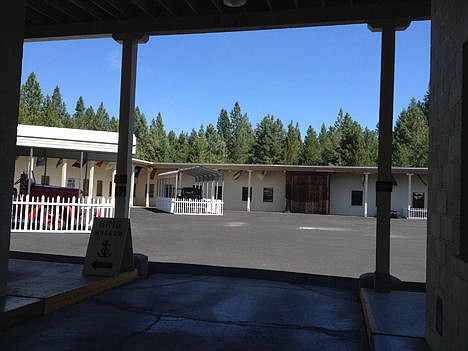Darn the tomatoes: Picnic at The Brig
Coeur d'Alene Press | UPDATED 9 years, 9 months AGO
"Damn the torpedoes! Full speed ahead!"
Rear Admiral David Glasgow Farragut shouted that order 151 years ago, as other Union ships hesitated that hot August day to enter mine-littered Mobile Bay (mines were then known as torpedoes). Such unfettered courage led the Union fleet to smash Confederate defenses in this famous battle. Farragut was not only the navy's first rear admiral, a title created especially for him; in 1866 Congress made him the first Admiral of the United States Navy.
No landlubber, Farragut - born in Tennessee, raised in New Orleans - first went to sea as a midshipman at the tender age of 8. Originally named James, he changed his name to honor David Porter, the close friend of his father who secured Farragut's first voyage on his son's ship.
Farragut never stopped sailing, rising through the ranks in a stellar 51-year naval career before he died at age 69 on Aug. 13, 1870, at Portsmouth, N.H.
Farragut State Park in Athol celebrates 50 years this summer, but first it was the impressive 4,000-acre Farragut Naval Training Station. This was the second largest in the United States, training 293,381 "boots" (naval recruits) in just 30 months during World War II. Once a massive complex of large buildings including several Olympic-size pools, boxing rings, tracks, and dormitories, the only remaining structure now is the brig, which park visitors can see without charge Memorial Day through Labor Day (donations appreciated).
The Brig Museum packs a lot of history, photographs, and artifacts into displays that provide a glimpse into Farragut's heyday and military significance. A short video illustrates what it was like to be a boot at Farragut in WWII, how the local community helped, and the role this area played in the Allies' success. The naval station closed after the war and the property went through some rough patches, including a stint as a technical college, before becoming the popular state park which today abuts the Navy's submarine base at Bayview.
Ever wonder why a ship or naval station's detention area or holding cells is called a "brig?" A brigantine was a type of fast, two-masted sailing ship. After retirement from active duty, brigantines were sometimes used to transport convicts to distant prison colonies.
The Brig Museum at Farragut makes a nice half-day trip. After a visit, just a couple of minutes farther down South Road is a lakeside picnic area and playground; at the end of South Road is another stunning view of Lake Pend Oreille. Wish I'd thought to bring sandwiches.
Sholeh Patrick is a columnist for the Hagadone News Network. Contact her at Sholeh@cdapress.com.



